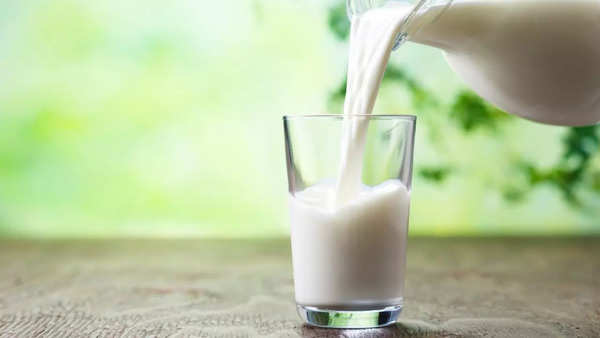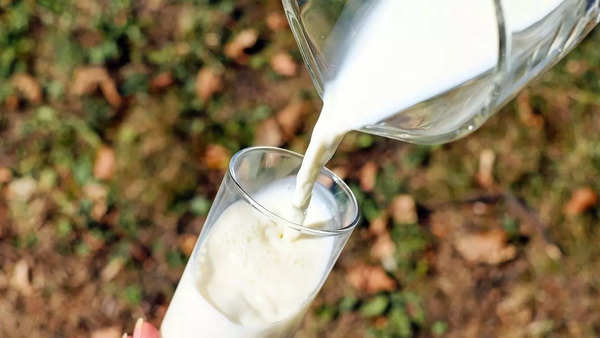Robert F Kennedy Jr who is all set to become US Secretary of Health and Human Services and intends to transform America’s healthcare system recently shared his wish list for the FDA, which among many things includes promotion of raw milk. RFK Jr is a proponent of raw milk and himself claims to consume it. However raw milk isn’t without its health hazards as without
pasteurization
, it can put people at risk of many foodborne illnesses. Around 30 states allow sale of raw milk, however, FDA regulates its sale across state lines.
Raw milk is also risky at this moment amid the bird flu outbreak in dairy cows. The CDC has warned against consuming raw milk as it can raise the risk of getting bird flu.
Side effects of raw milk
“Raw milk is not safe as it contains millions of microbes from the dairy animals to the personal handling leading to contamination. It should be boiled or pasteurized to get rid of germs which could result in serious issues from simple gastritis with serious enterocolitis, brucellosis, campylobacter etc,” says Dr. Vishal Khurana, Director, Gastroenterology, Metro Hospital, Faridabad.
Dr Khurana says the health issues may include diarrhoea, abdominal cramps, vomiting, kidney injury, etc. In some cases, these infections can turn into severe complications like muscle weakness or paralysis, kidney failure, and bloodstream infections.
This can especially be troublesome for vulnerable populations like children, the elderly, and people with weakened immune systems. Both the CDC and FDA discovered in studies that there were 202 disease outbreaks in the US due to drinking raw milk between 1998 and 2018 – leading to 2,645 illnesses, 228 hospitalizations, and three deaths.
“Some groups are at a higher risk of serious illness from raw milk, including children below 5 years, elderly above 65, pregnant ladies, and persons with weak immune system,” says Dr Khurana.
Raw milk comes from cows, sheep, goats, buffalo, or even camels. It can become contaminated in many ways – from animal poop, in the barn, or on milking equipment, or in the milk processing plant. It can also be contaminated if an animal has an infected udder or a disease such as bovine tuberculosis. It can also happen as a result of germs from insects and other small animals, says Sonia Bakshi, Nutritionist and Founder DtF.
Are there any benefits of raw milk?
Proponents argue that raw milk not only offers better taste but also nutritional benefits.
“Raw milk is packed with vitamins, minerals, and enzymes that can sometimes be reduced during pasteurization. Some people find that raw milk is gentler on their stomachs. It naturally has enzymes, like lactase, that help break down lactose, though this doesn’t work for everyone. It is believed that raw milk from clean sources can have beneficial bacteria that may support your gut health and immune system. Raw milk retains its natural fat-soluble vitamins (A, D, E, and K) and essential fatty acids because it’s unprocessed,” says Sakshi Lalwani told TOI Digital.
Lalwani, however, adds that raw milk can carry harmful bacteria, like E. coli, Salmonella, and Listeria which can be dangerous, especially for kids, pregnant women, older adults, and anyone with a weaker immune system.
She adds that while some people find raw milk easier to digest, it still has lactose and milk proteins, which can be tough for those with allergies or intolerances.
An extremely high concentrations of the H5N1 virus in the udders of infected cows were found, raising concerns that unpasteurized milk could lead to human infections. According to the US Food and Drug Administration (FDA), studies indicated that if the virus is found in milk, the pathogens can be killed if it’s pasteurized.
Is there any safe way to use raw milk?
Lalwani suggests following way:
1. Source carefully: If you choose raw milk, buy it from a reliable, certified farm with good hygiene practices. Some small farms even test their milk regularly for safety.
2. Try fermentation: Using raw milk to make fermented products like kefir or yogurt can boost beneficial bacteria. Fermentation can also help keep bad bacteria in check.
3. Keep it cold and use it quickly: Raw milk spoils faster than pasteurized milk, so keep it cold (below 4°C or 39°F) and use it within a few days.
4. Light boiling option: If you want to reduce risk without full pasteurization, you can boil raw milk lightly. This will kill most harmful bacteria but still keep more of its natural properties than full pasteurization.
However, for safety and prevention of many health risks, it is better to rely on pasteurised milk, agree experts.
(Picture courtesy: AP, Pixabay, iStock)
“They couldn’t detect missiles” Top Indian security expert decodes Iran’s missile attack on Pakistan
I’m Manas Ranjan Sahoo: Founder of “Webtirety Software”. I’m a Full-time Software Professional and an aspiring entrepreneur, dedicated to growing this platform as large as possible. I love to Write Blogs on Software, Mobile applications, Web Technology, eCommerce, SEO, and about My experience with Life.







